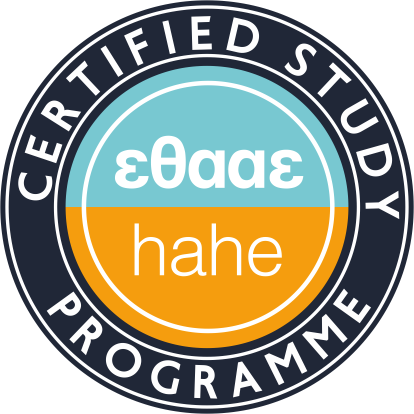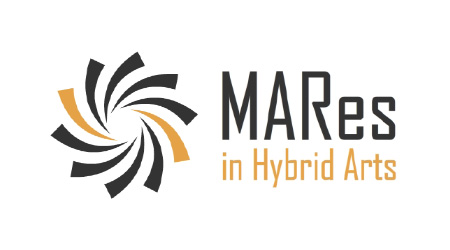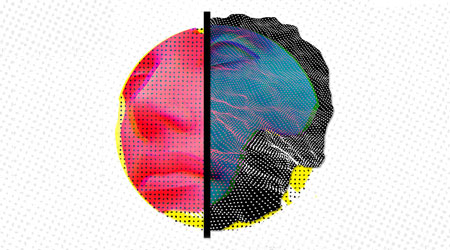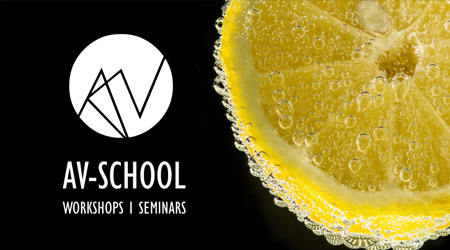Interactive Sound Systems
Teaching Staff: Zannos Ioannis, Rovithis Emmanouel
Course Code: AUD420
Course Category: Specific Background
Course Type: Elective
Course Level: Undergraduate
Course Language: Greek
Delivery method: Lectures
Semester: 4th
ECTS: 7
Teaching Units: 4
Teaching Hours: 4
E Class Page: https://opencourses.ionio.gr/courses/DAVA275/
Teaching Structure:
| Activity | Semester Workload |
|---|---|
| Lab Lectures | 26 |
| Lab Practice | 26 |
| Literature Study and Analysis | 80 |
| Practice and Preparation | 43 |
| Course Total (ECTS: 7) | 175 |
Recquired / Recommended : (AUD320)
Interactive systems support the dialogue between humans, computers or other entities in an environment. This course introduces the mechanisms and rules underlying interactive systems in practice, using state-of-the-art programming environments that support immediate programming and the realisation of interactive sound applications. Thus, students gain familiarity with the simple and rudimentary units of processing, generating and controlling data, as they are used for selecting or converting data via MIDI controllers or other devices. In addition, programming units for generating rhythm structures in time and processing sound data are developed. Finally, basic concepts of Object Oriented Programming are introduced, such as object, message, state, behaviour, class and instance.
By the end of class students are expected to be familiar with the principles of object oriented programming and with the fundamental techniques involved in creating and using interactive applications for music performance and for sound installations. They should be fluent with SuperCollider and have some degree of familiarity with ChucK. Additionally, they should be familiar with the operation principles and use of communication protocols used in interactive music and sound such as MIDI and OSC.
1st Week
This session gives an overview of the history and kinds of interactive music systems of the past (M, Cypher, Voyager) and the tools currently used to develop such systems such as ChucK, Max/MSP, Pure Data, SuperCollider, Gibber, TidalCycles and LiveCodeStudio.
2nd Week
SuperCollider is introduced as development environment for interactive sound applications. First examples of interaction are given using the Mouse as input device.
3 th Week
This sessionshows how to use the keyboard as input device for interaction and explores various different modes and approaches for using it.
4 th Week
The MIDI protocol is explained and uses of MIDI for interactive applications in SuperCollider are explained.
5 th Week
The OSC protocol is introduced and its use is shown for the communication between applications. The hardware and software substratum for use of OSC in an Internet via UDP or IP is explained. The beginning is made through examples of communication between the programming language and synthesis engine of SuperCollider. Following that, examples are explored in the communication of different applications such as ChucK, PureData, P5.js with SuperCollider or other
6 th Week
The principles of creating and using Graphical User Interfaces for interactive sound applications are introduced. Examples are given in PureData, SuperCollider and P5.js.
7 th Week
The notion of machine listening in introduced and examples of its use in interactive sound systems are given. Examples of Use of Feature Extraction Unit Generators in SuperCollider are given and the underlying Psychoacoustic principles are explained.
8 th Week
The notion of machine musicianship in introduced and examples of its use in interactive sound systems are given.
9 th Week
Physical Computing in interactive music systems is introduced. Different low-cost and alternatives are compared in practice, such as Arduino, Raspberry Pi, Pyboard and CHIP-PRO. Different types of sensors and the software involved in their use are discussed.
10 th Week
This session discusses principles of data sonification in interactive sound systems. Two approaches are distinguished: sonification of pre-existing fixed data sets imported from files and real-time data acquisition over the Internet.
11 th Week
This session explains the function of interactive sound systems on the internet using OSC or other protocols compatible with the Internet Protocol. Examples of environments running on the WebBrowser are given, such as Gibber or CodeCircle with Maximilian.
12 th Week
This session explores systems of Live Coding, such as JITLib, sc-hacks, TidalCycles, Conductive, Gibber.
13 th Week
A review of the material covered during the course is conducted. Student projects are prsented.
Collins, N. SuperCollider Tutorial. hlttp://composerprogrammer.com/teaching/supercollider/sctutorial/tutorial.html
Kapur, A., Cook, P., Salazar, S. and G. Wang. 2015. Programming for Musicians and Digital Artists: Creating Music With Chuck. Manning.
Rowe, R. Interactive Music Systems. 1993. Online: https://wp.nyu.edu/robert_rowe/text/interactive-music-systems-1993/
Ruviano, B.. ND. A Gentle Introduction to SuperCollider. https://ccrma.stanford.edu/~ruviaro/temp/00_PDF_A_Gentle_Introduction_To_SuperCollider_LULU_2014-09-06.pdf
Wilson, S., Cottle, D. and N. Collins, ed. 2011. The SuperCollider Book. MIT Press.
This course is taught on open-source tools available on all major operating systems. The main tool of choice is SuperCollider, but other tools such as PureData, ChucK and TidalCycles can be installed to give a more complete view. Furthermore, experiments are conducted on environments that work directly on the browser, such as CodeCircle and Maximilian.
Since this is an introductory class, an support to familiarization with basic tools such as EMACS, org-mode and git is provided.
Enhanced by multimedia content.
The learning process is supported by the asyncrhonous e-learning platform e-class.
Student performance is based on a final written paper, taking into account the students presentation of that presentation during the examination and the ensuing brief discussion with the examiner and the student's participation in class.
Students are expected to submit a written paper of ca 2500 words, on a topic chosen amongst the following:
- Musical Improvisation using Interactive Sound Systems
- Online Interactive Sound Systems
- Interactive Sound Systems using physical computing elements
- Presentation of an interactive sound system example programmed by the student.
Papers should follow the guidelines for written assignments given in the Department's website. They should include references cited and formatted following the Chicago Manual of Style v15g (Ahthor Date), as outlined here: https://web.library.uq.edu.au/files/26556/chicago15B-style-guide.pdf
Back
| << | < | July 2025 |
> | >> | ||
| Mo | Tu | We | Th | Fr | Sa | Su |
1 |
2 |
3 |
4 |
5 |
6 |
|
7 |
8 |
9 |
10 |
11 |
12 |
13 |
14 |
15 |
16 |
17 |
18 |
19 |
20 |
21 |
22 |
23 |
24 |
25 |
26 |
27 |
28 |
29 |
30 |
31 |
|||
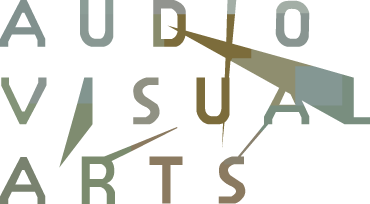


 Interactive Sound Systems
Interactive Sound Systems